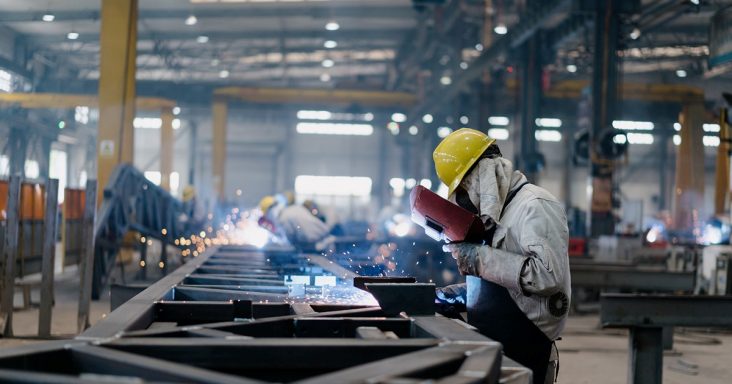Manufacturing sector’s decline continues for 9th month, but at a slower pace in July
by August 1, 2023 10:50 am 395 views

Economic activity in the manufacturing sector declined for the ninth consecutive month, according to the Institute for Supply Management (ISM). However, the rate of decline moderated slightly in July.
The ISM released Tuesday (Aug. 1) its Manufacturing Report on Business that shows the purchasing managers’ index (PMI) rose by 0.4 percentage points to 46.4% in July from June. A PMI below 50% indicates the manufacturing sector is contracting.
According to the July report, new orders, production, employment and backlogs declined. Supplier deliveries were faster. Raw materials inventories fell. Customers’ inventories were too low. Prices decreased. Exports and imports contracted.
“The U.S. manufacturing sector shrank again, but the uptick in the PMI indicates a marginally slower rate of contraction,” said Timothy Fiore, chair of the ISM Manufacturing Business Survey Committee. “The July composite index reading reflects companies continuing to manage outputs down as order softness continues.
“Demand remains weak but marginally better compared to June, production slowed due to lack of work and suppliers continue to have capacity,” Fiore added. “There are signs of more employment reduction actions in the near term to better match production output. Ninety-two percent of manufacturing gross domestic product (GDP) contracted in July, up from 71% in June. However, the share of manufacturing GDP registering a composite PMI calculation at or below 45% – a good barometer of overall manufacturing weakness – was 25% in July compared to 44% in June, a clear positive.”
The two manufacturing industries that reported growth in July were petroleum and coal products, and furniture and related products.
The report included the following respondent comments, some of which were mixed:
In the computer and electronic products industry, a respondent said, “current U.S. market conditions of inflationary and recessionary tactics affecting overall business. Customers are reducing or not placing orders as forecast; putting internal focus on reducing financial liabilities and overhead costs.”
A respondent in the chemical products industry cited slow sales going into the second half of the year and said, “no upturn is expected until at least the fourth quarter.”
In the transportation equipment industry, a respondent noted demand was softening, some prices are starting to fall and back orders have been mostly resolved.
In the fabricated metal products industry, a respondent said demand is expected to be stable over the next four to six months, but it’s uncertain over the long term. The respondent also expects customer growth to increase, but “we cannot point to fundamentals that sustain it. Supply conditions are similar to pre-pandemic, except for energy and raw input costs. Logistics costs have settled, transit times continue to shorten and capacities at most suppliers are sufficient.”
A respondent in the food, beverage and tobacco products industry expects production to increase soon as it prepares for the busy season in late fall. “The reports on cooling inflation and consumer confidence are driving expectations of a very strong back half of the year,” the respondent added.
A machinery industry respondent said suppliers are looking for new business amid market softening in China. A miscellaneous manufacturing respondent noted sales are higher than forecast, but supplier capacity issues remain.
In the primary metals industry, a respondent said the “order book continues to be strong. Working overtime to complete orders. Labor availability is still the No. 1 constraint impacting production. Cannot find qualified salaried or skilled tradespeople to hire. Hourly temporary employees are of poor quality and walk off after taking the job.”
